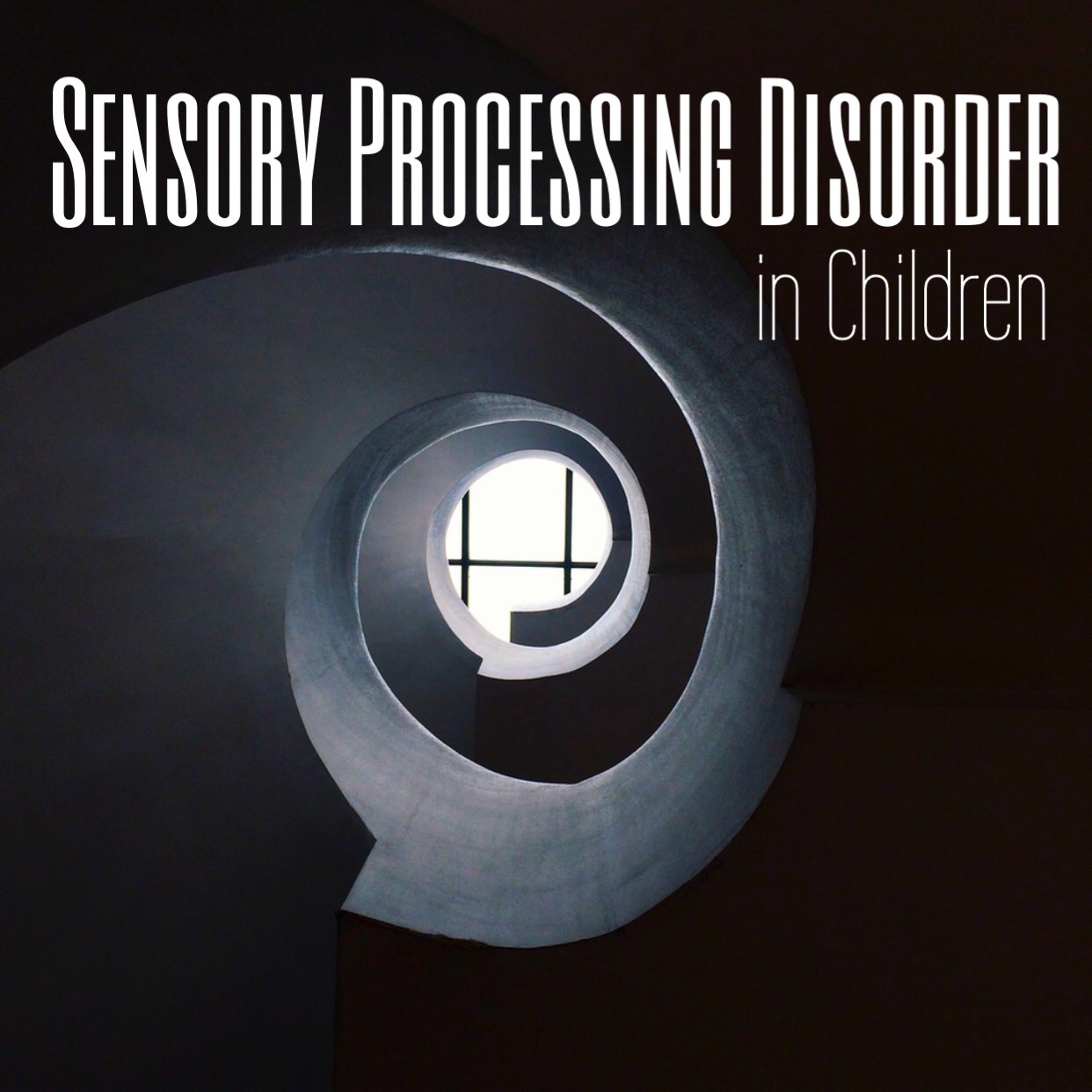
Sensory Processing Disorder in Children
By Teresa Weeke, MA, PLPC
*note: this article has been edited for readability, for the original, scholarly article, click here: Weeke Aug 2015 Original Article – Sensory Processing Disorder in Children
What is it?
Those who have Sensory Processing Disorder (SPD), formerly known as Sensory Integration Dysfunction, experience sensory integration problems such that the input the brain receives from the senses does not match up with an appropriate response. Examples of an inappropriate response might include: temper tantrums because a child does not like how clothing feels next to the skin; eating problems relating to food texture; difficulty with coordination; non-stop activity or lethargy after simply going to the playground. SPD interferes with a child’s ability to function in a pleasant manner, causing distress not only for the child, but for parents, who are sometimes told they don’t discipline enough. Teachers and other caregivers are often confused and frustrated by the child’s behavior and may blame the parents. Grandparents may blame as well, but may frequently assure the parents their child will outgrow the behavior (Kranowitz).
Causes
The late A. Jean Ayers, who was an occupational therapist, described sensory processing difficulties as “the result of inefficient neurological processing.” In the 1950s and 1960s, she explained how to assess and treat those who show signs of Sensory Integration Dysfunction to other occupational therapists. The possible causes of SPD include a wide range of environmental and genetic conditions, including premature birth, trauma at birth such as lack of oxygen, exposure in utero to pollutants or other toxins, child abuse, lack of stimulation, constraints on movement, and limited social interaction (Kranowitz).
Prevalence and Problems with Diagnosis
There are no good estimates of the prevalence SPD in the general population. Prevalence in the therapeutic population varies greatly; one author estimated from 5% to 10% of those who do not have any disabilities to as high as 40-88% for those who do (Ayres). SPD frequently occurs together with Autism Spectrum Disorder, Anxiety Disorders, and Attention-Deficit /Hyperactivity Disorder (ADHD). For this reason, and because it can mimic other diagnoses, it can be difficult to diagnose SPD. In addition, many pediatricians and teachers are not familiar with SPD, though more are becoming more aware due to new research studies and books about it. The current challenge is for proponents of the disorder to show that it is distinct from other disorders, and prove that the treatments employed are reliable and effective at resolving SPD in general (Palmer).
Symptoms
According to Carol Kranowitz, in The Out-of-Sync Child, there are four types of common symptoms of SPD in children: sensory modulation problems, sensory discrimination problems, sensory-based motor problems, and associated regulatory and behavioral problems. In the case of sensory modulation problems, the child may be over responsive, under responsive, or have a strong desire for sensory input such as licking and tasting inedible items (like toys or clothing), or staring at a tv/computer screen for long periods of time. Children with sensory discrimination problems struggle to recognize sensations such as touch, movement, and body position. Sensory-based motor problems may be indicated if the child places his body in uncommon ways and shows signs of awkwardness, or has problems dressing and manipulating objects. The fourth category, associated regulatory and behavioral problems, includes a wide variety of related conditions with regard to self-regulation, sleeping difficulties, picky eating (due to how the food feels, tastes, or smells), and associated skills such as sucking, swallowing and breathing, dyslexia, learning disabilities, and allergies. Social and emotional functioning can also be problematic due to fears and frustrations resulting from the body’s failure to properly integrate sensation and response (Kranowitz). These problems apply to the five ordinary senses of sight, hearing, touch, smell and taste, but the child’s sense of balance and orientation can be affected as well.
The most common problem with sensory modulation is overcompensation to sensory input. This can cause a wide variety of reactions, including distraction or a defensive (fight, flight, or freeze) response to over stimulation. Overcompensating children may find sensations frightening and may react by crying, or have recurring temper tantrums that are abnormally long or intense. Others are under responsive and require more stimulation in order to be comfortable. They may have problems with engaging or withdrawing. These “sensory craving” children may be very creative and intellectually talented, but may over eat, or sleep more than normal. (Kranowitz).
A few children may go back and forth between over responsivity and under responsivity; one day they love a sensory experience and the next day they hate it, which makes it difficult for caretakers. Children struggling with Sensory Discrimination Disorder may experience “jumbled” input, using too much force with objects or running into others. SPD may also include Sensory Based Motor Disorders. The “sensory slumper” may have low muscle tone and be “loose and sloppy.” Another motor disorder is dyspraxia, where the child who is still developing, has a disruption in sensory processing and motor planning. These children will appear clumsy and may miss a step on the stairs or not accurately gauge where to pick up a glass full of water. (Kranowitz).
Treatment
We all experience problems with sensory processing when we are ill, overworked, and stressed; but when the brain is in a perpetual state of disorganization, the child will struggle on a daily basis to function. When this is the case, parents should document their child’s behavior. They should note time, date, circumstances, and teachers’ comments and reports, in order to gain more understanding about the behavior. A diagnosis with treatment can aid a child in exercising all of the senses in order to function more positively. Improved learning, better recognition of the senses of sight, smell, hearing, taste, and touch, and an overall feeling of competence and self-assurance can result (Kranowitz).
Unfortunately, most insurance companies don’t cover the cost for SPD treatment because it is not yet in the Diagnostic and Statistical Manual of Mental Disorders. Nevertheless, an Occupational Therapist can assess and treat a child who may have SPD, usually working together with a mental health professional that can treat anxiety, ADHD, and any other co-occurring disorders. An optometrist, audiologist, or speech pathologist may also be necessary, depending on the child’s needs (Kranowitz).
Other treatments may also be effective. A “sensory diet” developed in the 1990s focuses on a ‘menu’ of activities (alerting, organizing, and calming) to meet the individual’s needs. Alerting activities help the under responsive child by encouraging them to be more responsive. Recommended activities may include bouncing on a therapy ball or crunching on dry foods. Organizing activities are for helping the child’s appropriate responses. Activities such as hanging on a chinning bar, pushing or pulling heavy items, or going into an upside-down position may be recommended. Calming activities that help with sensory overload may include sucking (as with a pacifier), pushing against walls, and cuddling with a pet or stuffed animal (Kranowitz).
Consulting with an occupational therapist or counselor in order to find out what will best fit your child’s needs is recommended. Have a set time each day for the child to engage in an enjoyable activity that his or her nervous system is craving. Allow them to direct the playtime and observe for indications of over arousal, such as whether they’re relaxed and happy or getting cranky. It’s also important to allow the child to choose different activities in various environments (Kranowitz). Follow up with a therapist in order to assess whether your child’s sensory activities are helping.
Once your child is diagnosed with a sensory disorder, it is important that principals, teachers, and school staff members are aware of your child’s sensory disorder. Being educated about sensory disorders can enable them to better recognize when the child is overstimulated, and suggestions from the parents can help teachers and caretakers to know what they can remove from the child’s environment. A child with dyspraxia may struggle with knowing what to do and how to accomplish what they are told to do, and they may be so distracted that they have difficulty doing the work that the teacher has assigned. Some children perform better having their own desk, for others, chewing gum helps to calm nerves and may help them study better. For others still, having a locker that is easier to open can be less stressful. It’s important to set up a meeting with the school staff before school begins and share any information that would be helpful (Kranowitz).
At home, there are many ways to reduce the impact of SPD on family life. The child cannot help that they have a sensory disorder any more than we can help it when we’re slow from having the flu, so it’s important to look ahead at what may cause dysregulation in your child. When they’re cranky, it’s important to pay attention to whether they’re sensory seeking or avoiding. Structure is critical, as is realizing and accepting that your child will have good days and bad days (Kranowitz).
Keep communication simple. When you discipline, focus on problem solving with your child. Many times, parents will react to their child’s emotions, so it is important that the parent deal with their own emotions before trying to correct their child. Ask your child for their input about what they need, and state your expectations for their behavior. Some behaviors such as hitting or pushing are not acceptable, but allowing the child to state their needs and emotions is acceptable when done in a respectful manner. Empathize with your child when they are on sensory overload by listening and reflecting back so that they feel understood and heard (Kranowitz).
Know your child’s strengths and weaknesses and speak with others who have knowledge about different learning styles, and learn how to best teach those with different abilities and talents (Kranowitz). It may be too over stimulating for the child to attend a party, or the child may be overwhelmed each morning when they have successive tasks that need to be done before leaving for school. Helping them lay out their clothes or pick out what they want to eat for breakfast may improve the situation. SPD can be overwhelming for the whole family, so connecting with a support group such as the SPD Foundation can be helpful for parents who feel overwhelmed and are in need of more support.
Finally, focus on your child’s strengths, and not their weaknesses. Encourage their interests and set small manageable goals. Help them come to the realization that they are capable of accomplishing assigned tasks in school and at home, and are able to successfully adapt to and tolerate the challenging stimuli in their environment. My grandmother used to say, “You can catch more flies with honey than you can with vinegar.” If your child senses that you are encouraging, and making an effort to understand their needs when they are dealing with sensory processing issues, then they will have an increased sense of self-esteem. Sensory Disorders are not something the child will outgrow, but they can be managed with the help of parents, caregivers and other professionals.
 About the Author
About the Author
Teresa Weeke, PLPC at Agape Christian Counseling, earned her degrees from Missouri State University and Missouri Baptist University. She is a Provisionally Licensed Counselor and is studying to become a Registered Play Therapist. She is also a member of the American Association of Christian Counselors and the Association for Play Therapy. Click on the picture to the left to read her full bio.
REFERENCES
- Ahn, R. R., Miller, L.J., Milberger S. & McIntosh, D.N. (2004). Prevalence of Parents’ Perceptions of Sensory Processing Disorders Among Kindergarten Children. American Journal of Occupational Therapy, 58, 287–293.
- Kranowitz, C. S. (2005). The Out-Of-Sync Child: Recognizing and Coping with Sensory Processing Disorder. New York, NY: Penguin Group (USA) Inc.
- Palmer, B. (2014). Get Ready for the Next Big Medical Fight. Slate Magazine Online. Retrieved August 9, 2015, from http://www.slate.com/articles/health_and_science/medical_examiner/2014/02/sensory_processing_disorder_the_debate_over_whether_spd_is_a_real_disease.html





